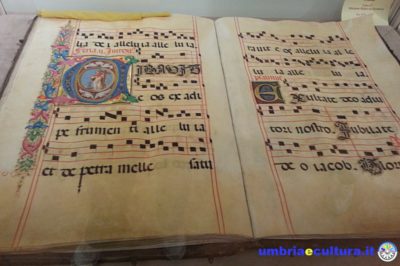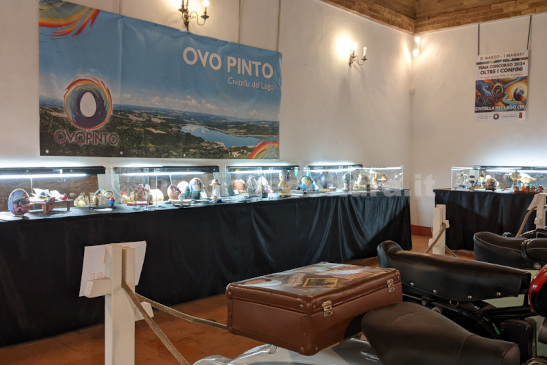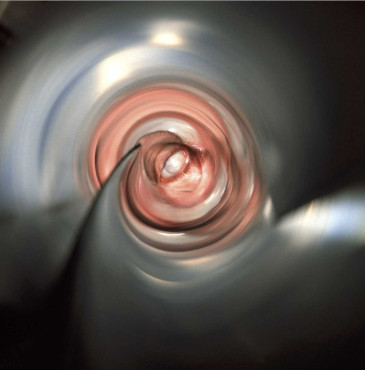The Treasures Gallery preserves furnishings, objects, works of art, from San Pietro abbey and from the two fortresses of Casalina and Sant’Apollinare
In 1892 the Agricultural Foundation was born in Perugia, established to manage the assets owned by the Benedictine community of the abbey of San Pietro, expropriated with the Pepoli decree of 1860, with which the ecclesiastical assets became property of the newborn Italian state.
The monks of San Pietro, thanks to their position on the side of the Perugian insurgents (who found refuge inside the abbey and even inside the organ of the Cathedral), enjoyed, for this reason, a particular treatment: they were granted to take advantage of their possessions as long as at least three of the monks who attended the events remained alive. Only after the death of the last the practices for the establishment of the Foundation begun.
The very rich abbey could include, in the heyday, possessions for more than 2500 hectares of very fertile land that stretched along the Tiber plain, from Perugia to Todi, so much so that it was said that the abbot could move between the two cities without leaving the properties of San Pietro.
In addition to the lands, the abbey owned all the extraordinary monumental complex of Perugia, the fortresses of Casalina and Sant’Apollinare, as well as a large quantity of works of art, many of which are kept inside the cathedral, while others have found a place in the Treasures Gallery, opened in 2001.
In the Gallery, currently not open to the public but visible by request to the Foundation, there are furnishings, objects, works of art from the abbey and from the two fortresses of Casalina and Sant’Apollinare.
Big corali (handwrited an decorated books with music for the fiars choir) from the fifteenth and sixteenth centuries, opened in display cases, enchant for their fine technique. The precious decorations in pure gold and colors obtained with precious and very expensive stones such as malachite and lapis lazuli enchant with their beauty. These corali, made on parchment, contain Gregorian music and were placed on the large lectern which can still be admired in the cathedral, to be used during the various liturgical periods.
Unfortunately some pages of those books were cut and stolen but, luckily, the Carabinieri managed to recover them just before they were auctioned, returning them to the Foundation giving us now the to the chance to adimre them in their beauty.
The works in the Treasures Gallery span a period from 1500 to 1800, while the historical archive contains documents ranging from 1002 to 1900. Topographical maps on parchment, from the archive, of some plots of land owned by the abbey, while the economic registers allow you to enter the daily life of the monastic life, from the report of the goods sold and purchased, to a fun notebook where the dishes consumed by the monks during meals were diligently noted, day by day.
Paintings from the abbey apartment, a small statue of San Benedetto of the Della Robbia school, some works by Sassoferrato, the original lunette of the entrance door of the Cathedral by Nicola di Paolo and a “star” (one of the 4 cover of the sewer well once in the homonymous cloister, made to collect the rainwater), the only survivor, enrich the collection.
Benedetta Tintillini
Find the Treasures Gallery of San Pietro Abbey on Google Maps:



